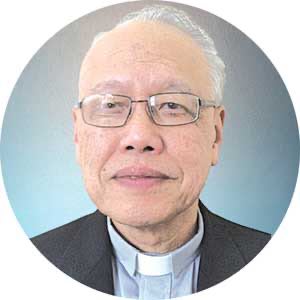The narratives in Genesis 1-11 are highly figurative in their language. They introduce the story of God’s people which begins with the call of the historical Abram/Abraham in Genesis 12.
The great flood (Genesis 7:17-24) finally came after Noah’s preaching God’s righteousness and human sin for 120 years. The flood story is probably an interpretation of an actual historical event retold in the theology of ancient Israel. The purpose of the story is to tell the original hearers a message about God and humanity. God did not give the ancient people scientific data. On Good Friday, God took the judgment for sin upon himself rather than humanity. Thus, through the lens of Jesus, the flood story tells us the news of God’s grace and love for his people.
After the great flood, God made a promise that he will never destroy the earth by flood (Genesis 8:20-22) until the final judgment. God commanded humanity to “increase in number and fill the earth” (Genesis 9:1). Noah had three sons born to him: Japheth, Shem, and Ham. There are seventy nations from the three sons of Noah (Genesis 10:32). Genesis 10 is a remarkable historical document. But some names are left out. Perhaps, the Bible writer has included no more than he actually knew to be the case.
Genesis 10:2-5 tells us about the sons of Japheth. Japheth is the father of what are called the Indo-European peoples. Genesis 10:21-24 tells us about the sons of Shem. Shem produced the Semites from which Israel came. Genesis 10:6-20 tells us about the sons of Ham. From the city of Babylon in the valley of the Euphrates, the Ham’s family was divided into two parts, one migrating southward into Africa, and the other going east.
There is one omission: the people of Asia. Where do they fit in? It is possible that we cannot know, since the lists of Genesis 10 are not complete.
Humanity began to spread throughout the entire world (Genesis 11:7-9). Humans continue to be on the move. Every group of humans has immigrated at some point. We all are immigrants, refugees or their descendants.
Today’s Canada is unique in the world. The Canadian people include descendants of the First Nations, Inuit, and Metis; descendants of French settlers (Acadians, Quebecers, other French-speaking communities); descendants of English, Welsh, Scottish and Irish people; and all newcomers after the Second World War. Until the 1970s, most immigrants came from European countries. Since then, the majority have come from Asian countries.
Today’s anthropologists would like to divide humanity into five races: Caucasoid, Negroid, Capoid, Mongoloid, and Australoid. According to the Bible, there is only one race—the human race, not five different human races. Humans are all the same race. Race should not be defined according to skin tone or eye shape (as stated in Joseph L. Graves’ “The Race Myth and A Voice in the Wilderness,” 2004). We are all created by the same God. We are all created for the same purpose—to glorify God.
In the beginning, God created Adam (Genesis 2:7) and Eve (Genesis 2:22) and all other humans came from those first parents. We are genetically related through Adam and Eve. Let us fast forward to the future! In heaven, we will see a vast number of people “from every nation, tribe, people and language” praising God at his throne.” (Revelation 7:9)




